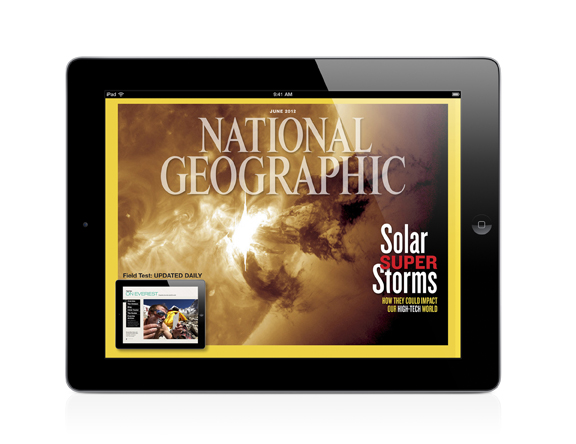Share
In the Field with National Geographic: On Everest, On Instagram
If you could share photos from the tallest peak in the world – 29,000 feet to be exact – would you? National Geographic says “why not?” as ...
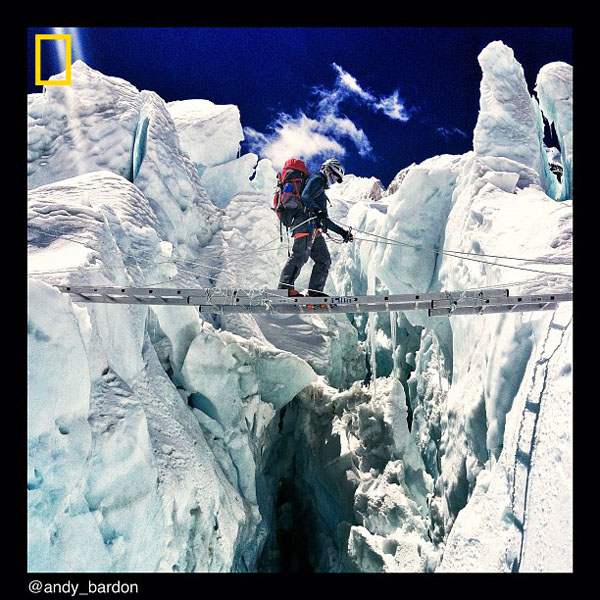
If you could share photos from the tallest peak in the world – 29,000 feet to be exact – would you? National Geographic says “why not?” as mountaineer Conrad Anker led Nat Geo writer Mark Jenkins and photographer Cory Richards on a climb to the summit of Mt. Everest. The result is the “On Everest” blog, where contributors post stories and photos (most interestingly, Instagram photos) of their trek.
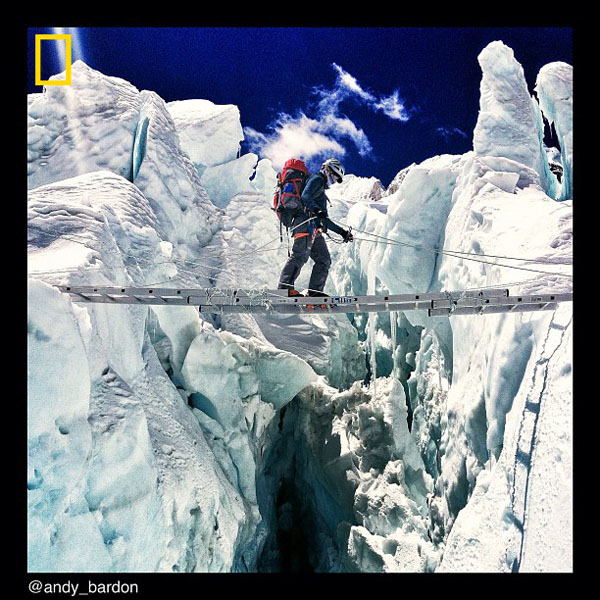
Photo by Andy Bardon/National Geographic. Instagram: @emilyharrington Crossing a ladder in Khumbu Icefall. The team is acclimatized and ready to fire. #OnEverest @thenorthface
For weeks, the climbers have been live blogging their adventures as they make a push for the summit, complete with daily posts to the @NatGeo Instagram account. In one of their most recent posts “On Everest, On Instagram” the climbers divulge how they’ve managed to keep snapping Instagram shots (as well as regular photos) as they make their way to the world’s tallest peak:
“Expedition leader Conrad Anker (@conradclimber) posted National Geographic’s first Instagram from Kathmandu on March 23. Since then, more than 60,000 fellow Instagrammers have begun following the adventure on our account, @natgeo. And there’s one thing they all want to know: How do you keep your batteries charged?
So we asked our three most active shooters – Andy Bardon (@andy_bardon), Sam Elias (@bookofsamuel), and Emily Harrington (@emilyaharrington)—how they do it and what they’ve learned about squeezing the tallest mountain on Earth into a square.
What model phone do you use?
All: iPhone 4S
How do you charge your batteries?
Andy Bardon: We keep our batteries charged by using solar panels in Base Camp.
Emily Harrington: I have this mini-charger I take with me up to Camp 2. It works pretty well and will fully charge my phone a few times before running out.
How do you keep them charged in such cold temperatures?
AB: The trick to keeping them working up high is to keep them warm. I have a chest pocket in my base layer (long underwear) that I store my phone in. The inside pocket of your jacket would work too, but don’t plan on having any battery life if you keep your phone in your backpack. With temps around zero Fahrenheit, it is key to stay on top of it.
EH: I sleep with my phone in my sleeping bag to keep it warm at night and put it in a chest pocket during the day to keep it close to my body.
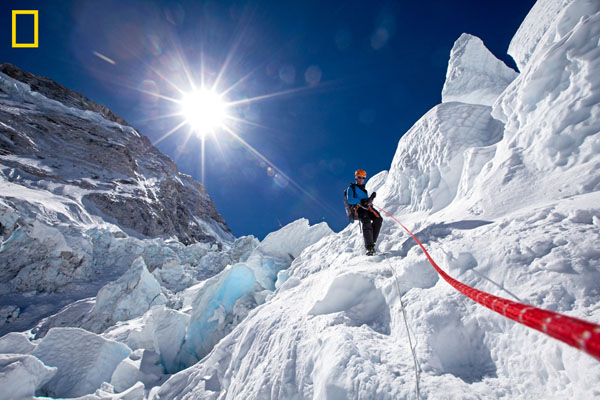
Photo by Cory Richards/National Geographic. Conrad Anker descending an ice step in the Khumbu Icefall with a fixed rope.
Any particular shots you’re hoping to get? We hear rumors of 3G at the summit.
Sam Elias: Most of my shots are inspired in the moment—spontaneous creativity. Of course, however, I hope to get a shot on the summit.
EH: I don’t think the 3G works this year, but I’d love a few summit shots and will Instagram them once I get to Base Camp.
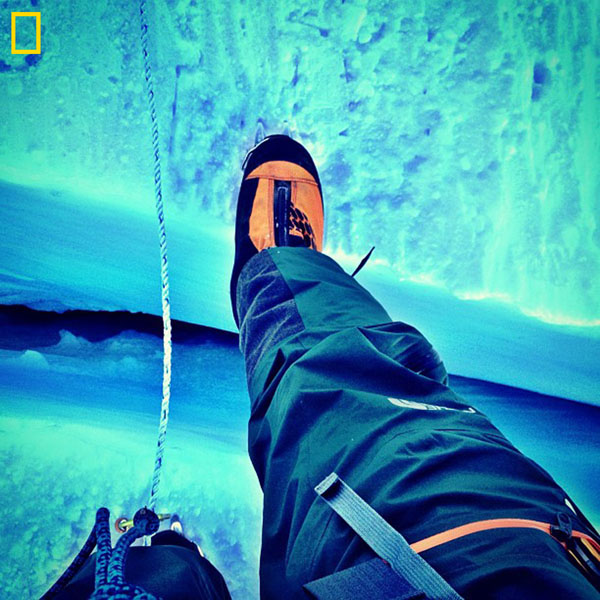
Photo by Samuel Elias/National Geographic. Stepping over a #crevasse on the way to camp 1. #acclimatizing > @thenorthface @natgeo #OnEverest
Besides Instagram, what other photo apps are you using?
SE: I never shoot the photos in the Instagram app, so learning to shoot for the Instagram format—small and square—can be challenging. I also use Camera+, Diptic, AutoStitch, Tilt Shift Focus, Squaready, and Slow Shutter.
EH: I like the options that Camera+ offers, and that you can decrease the intensity of the filter (i.e., if you just want a tiny bit of HDR—high dynamic range—to bring out the mountains, you have the option of sliding the intensity down from 100 percent to 15 percent, or 25 percent or whatever you think looks best).
AB: I use Camera+, Diptic, CrossProcess. The best lesson that I have learned on this trip is to experiment. Be creative and shoot what inspires you. If it doesn’t work out, you can always delete it.
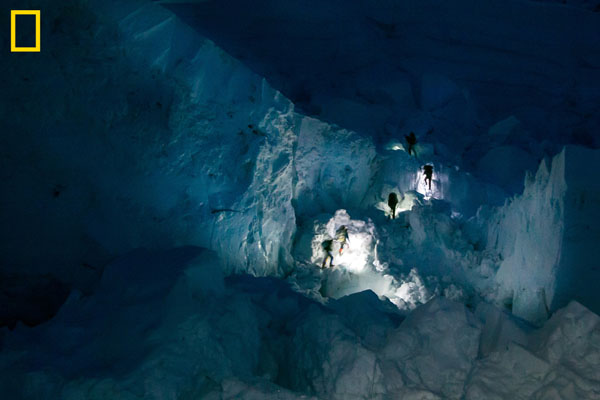
Photo by Cory Richards/National Geographic. Sherpa’s headlamps in the Khumbu Icefall early in the morning.
Do you have favorite filters or techniques that work best on snow and ice?
AB: Shooting in snow can be really tricky. It is so bright up here that it is often hard to even see the screen on your phone. It’s important to remember that you need to expose for the brightest part of the photo, otherwise it will be all blown out. I usually tap the snow right around my subject to make sure the photo won’t be overexposed.
SE: Most filters work with snow/ice, because there is so much contrast (white and black). HDR always results in an interesting effect though.
EH: For snow and ice, I actually try to avoid HDR because it’s too harsh, but I do use the “clarity” option in Camera+ because it brings out textures and shadows in the snow and ice that are otherwise flat.

Photo by Emily Harrington. natgeo @emilyaharrington self portrait at the top of the the world – 8848m Mt Everest. What a climb it’s been! @thenorthface #oneverest
What about at night?
AB: You wouldn’t believe how bright the moon is up at Base Camp. When it is even a crescent moon you don’t need a headlamp at all. The full moon makes it seem almost like dawn or dusk.
SE: I steady the phone by propping it against something completely stable. Then a slow shutter or steady camera sensor app will help.
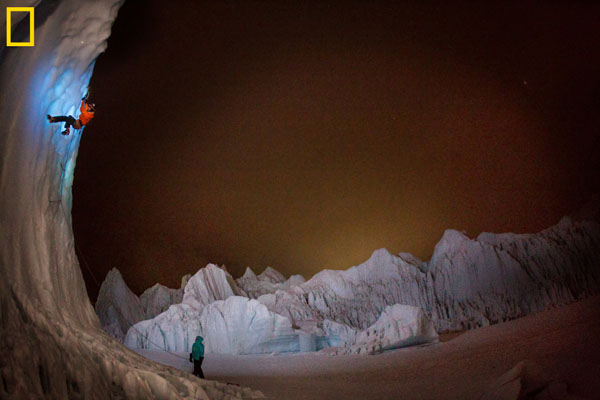
Photo by Cory Richards/National Geographic. From Dispatch #10: Learning to Breathe (iPad Exclusive) > > Posted April 24, 2012 > > The North Face athlete Sam Elias trains in the Khumbu Icefall near Everest > Base Camp.
Don’t your fingers freeze when using an iPhone on Everest?
EH: A little known fact: The + volume button on the side will shoot as well, so you don’t need to use the touch screen.
AB: Yes, frozen fingers are a problem. Once your hands get cold enough your phone doesn’t even recognize them. The North Face makes a pair of fleece gloves, which allows you to work your phone in cold temps. When it gets really cold and you are forced to wear heavy gloves or mittens, I actually use my nose to take the photo! Sounds ridiculous, but it works.”
To see more of their “ridiculous” shots from the top of the world, follow @natgeo on Instagram. You can also get the June edition of National Geographic magazine for iPad and the “On Everest” blog.
And to get an even more in-depth behind-the-scenes look at National Geographic photography, join us for a live webinar on Tuesday June 5th at 4pm EDT with Senior Photo Editor Elizabeth Krist. Registration is free, but space is limited!
